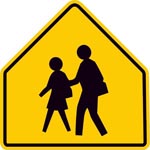Children, Youth, Families & Schools, Nebraska Center for Research on
Document Type
Article
Date of this Version
2010
Citation
Hanna, J., Hinrichs, K., Mahar, C., DeFrain, J., & Durden, T. (2010, January). Infants and Toddlers—Developing More Than One Language. NebGuide G1989. University of Nebraska–Lincoln Extension, Institute of Agriculture and Natural Resources.
Abstract
StoryQUEST’s Vision: High-quality early relationships and experiences throughout their daily routines provide each infant and toddler with the tools and skills to build a strong foundation for future school readiness. Families, caregivers, and communities as a whole collaborate to enable all children to become highly competent in language and literacy. This series was developed as part of a national research project — StoryQUEST — through the California Institute on Human Services, Sonoma State University.
Toddlers who are learning more than one language benefit from having supportive adults helping them. Learn strategies to assist them in this NebGuide, the sixth in a series of nine.
When infants and toddlers are developing more than one language, the goal is that they will learn English and develop fluency in their home language.
Children can become truly bilingual and use two or more languages with equal fluency. Children, families, schools, and communities all benefit when children keep their connection to their language and heritage.
Children best learn language skills in caring, one-on-one relationships that lead to frequent interactions in which they know they will be understood. Close relationships between providers and families support a child’s efforts to learn English while still developing her/his home language(s).
Adults can support young children who are developing their home language and English, and ready them to succeed in school in the United States.
Included in
Public Affairs, Public Policy and Public Administration Commons, Social Work Commons, Sociology Commons


Comments
Copyright University of Nebraska 2010